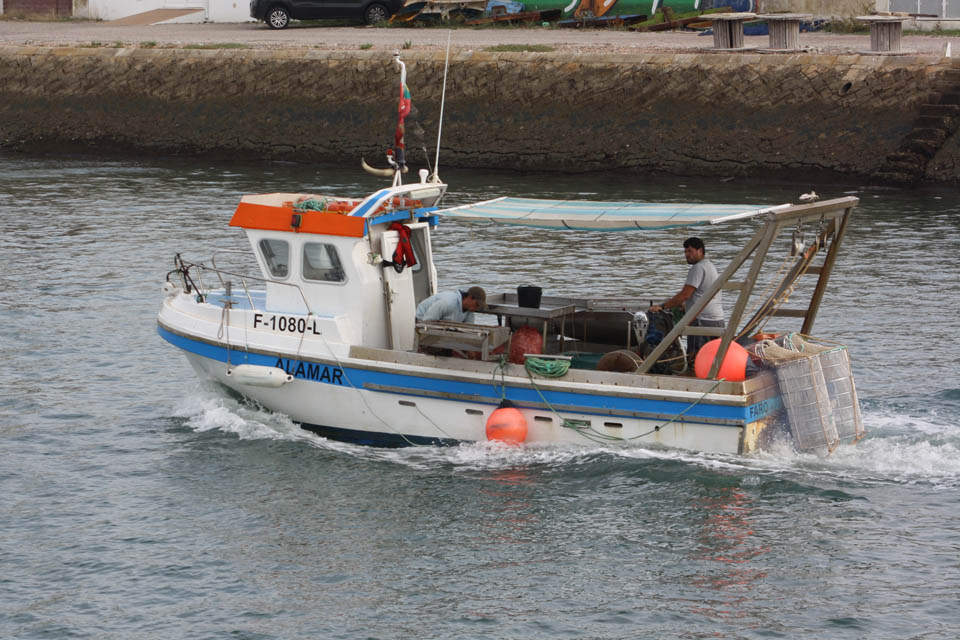 The hookra fleet in the South West zone should direct its "fishing effort to other bivalve species that occur in abundance in this zone", advise the IPMA researchers, after another bivalve monitoring campaign carried out in that coastal zone. .
The hookra fleet in the South West zone should direct its "fishing effort to other bivalve species that occur in abundance in this zone", advise the IPMA researchers, after another bivalve monitoring campaign carried out in that coastal zone. .
This campaign, carried out in June of last year, indicated that the longueirão/razor (Siliqua Ensis) was the species that registered the greatest increase in the average fishing yield, the opposite of the situation in terms of shellfish (Donax trunculus).
These monitoring campaigns of the bivalve mollusc beds that occur on the oceanic coast of the South West zone have been carried out «regularly» by IPMA since 1996, with the objective of «assessing their conservation status». However, "various reasons led to the fishing campaigns programmed for 2011-2013 not being carried out, which is why the legislation in force has remained unchanged for the last four years".
The campaigns focus on the white clam (solid Spisula), the donkey's foot (Chicken Chamelea), the longueirão/razor (Siliqua Ensis), the clam (callista chione) and the shell (Donax trunculus).
In this 2014 campaign, «in terms of spatial distribution, compared to 2010, there was an increase for the longueirão/razor and white clam, a decrease for the clam, keeping the donkey and clams unchanged» .
For the white clam, “although there was an increase in the average fishing yield, it was found that the catches are constituted by a low proportion of juveniles. In the case of clams, overexploitation of the adult fraction was found».
Bearing in mind that these campaigns have allowed «the adjustment of fishing effort and fishing quotas to the state of resources, so as not to compromise their sustainability», as well as «the testing of new management measures, such as the replacement of daily fishing quotas by weekly fishing quotas per vessel”, the IPMA researchers and “in view of the results obtained”, proposed management measures.
Those specialists underline, in their final report, that “Of all the species analyzed, the clam is the one that requires the most attention, as the overexploitation of the adult fraction was observed. The high number of undersized individuals in the catches indicates that the species can recover in the short term, provided that measures are taken to restrict its exploitation».
 Thus, the IPMA suggests “increasing the daily fishing quota for longueirão/razor, reducing the daily fishing quota for clams, maintaining the current quota for white clams and clams and introducing a daily quota of fishing for donkey's foot”.
Thus, the IPMA suggests “increasing the daily fishing quota for longueirão/razor, reducing the daily fishing quota for clams, maintaining the current quota for white clams and clams and introducing a daily quota of fishing for donkey's foot”.
Since this campaign did not show the crab clam beds, they also suggest that “the current fishing quota be maintained”.
They also advise that the hooker fleet operating in the south-western zone “direct the fishing effort towards other bivalve species that occur in abundance in this zone, namely the lustrous cockle (laevicardium crassum), the big cockle (acanthocardia tuberculata) and the venus clam (Venus house). "
IPMA technicians explain that such a measure “would make it possible to diversify catches and alleviate pressure on the main commercial species, and promote, on the one hand, the recovery of species whose populations are more vulnerable (especially the clam) and, on the other, to increase the distribution area and abundance of other species (white clam, longueirão, conch and donkey's foot)».
Based on these conclusions, the IPMA suggested to the tutelage the alteration of some paragraphs of the ordinance that regulates this sector of fisheries, namely to stipulate that «the maximum limit of daily catches of bivalves, per vessel, regardless of the species caught, is fixed in 2000 kilos'.
But there will also be maximum weekly catch limits, by species and by vessel, namely 1000 kg for Clam (callista chione), 1500 kg for White Clam (solid Spisula), 1000 kilos for the Macha Clam (venerupis pullastra), 900 kilos for Conquilha (Donax spp.), 1000 kilos for the Longueirão/razor (Ensis spp.), 25 kilos for Donkey's Foot (Chicken Chamelea) and 2000 kg for other bivalve species.
Click here to know in full the IPMA report.


















Comments